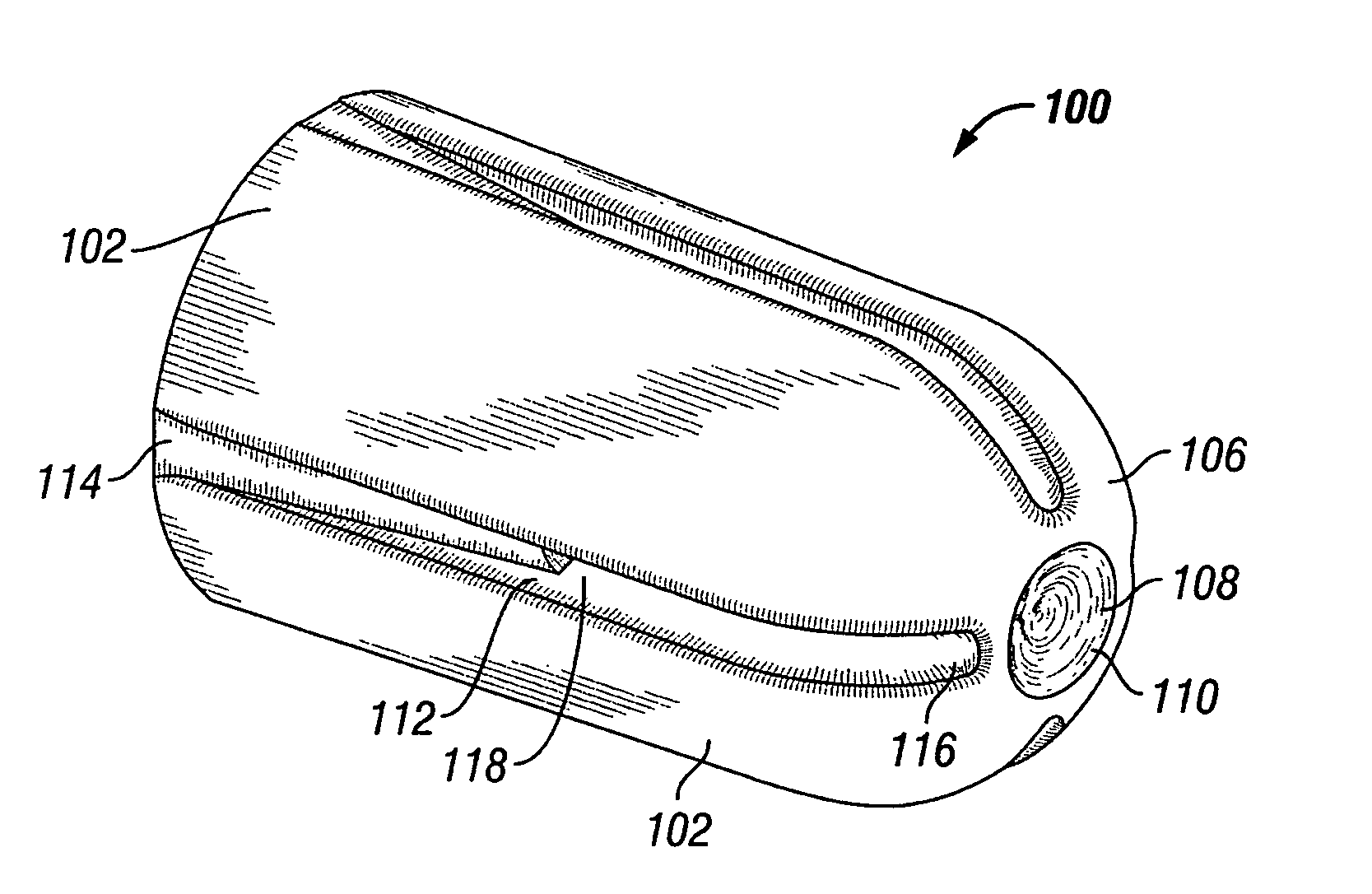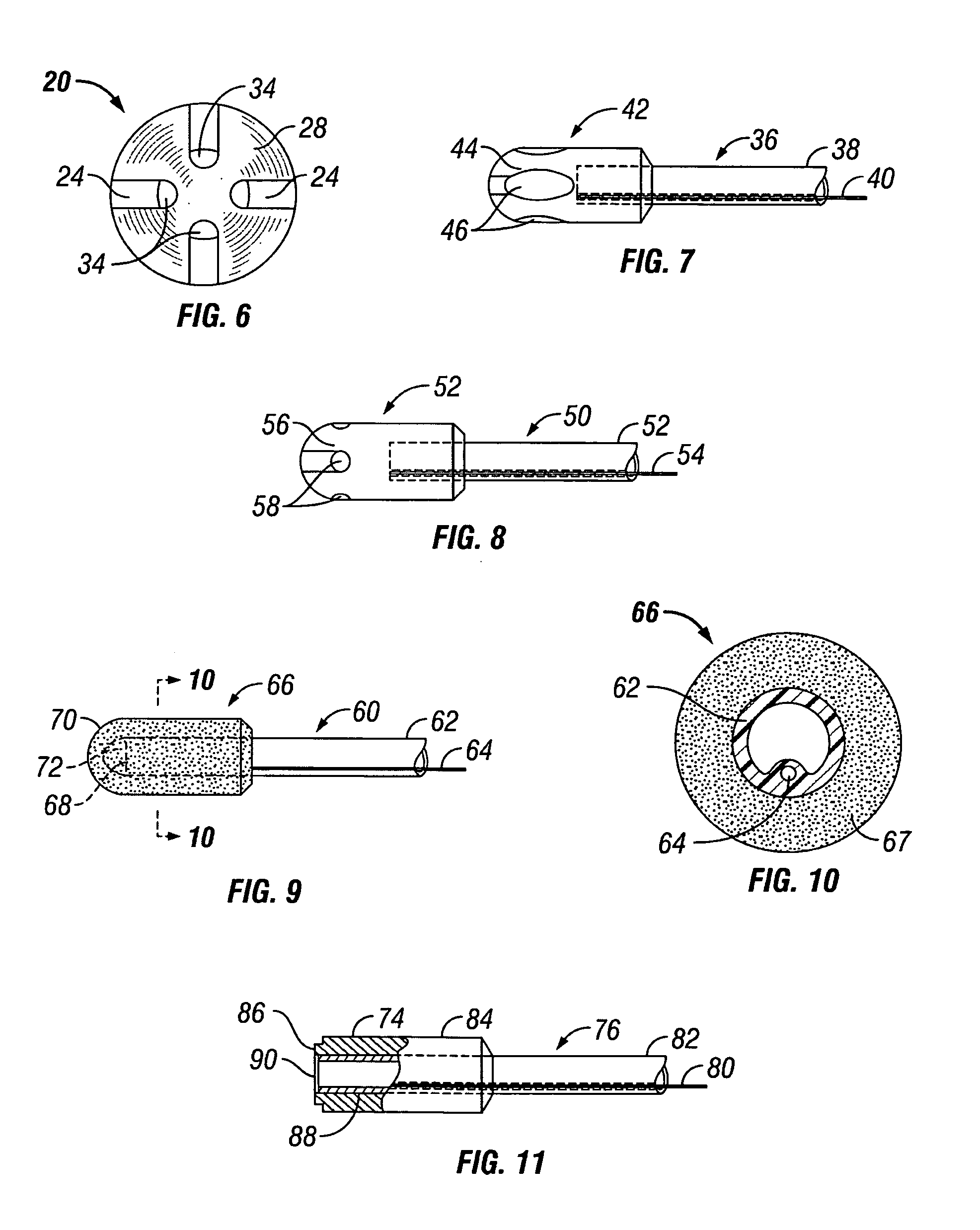Aspirator having a cushioned and aspiration controlling tip
a technology of aspirator and tip, which is applied in the field of tubular appliances, can solve the problems of affecting the quality of life of the patient, so as to reduce the effect of reducing the potential for tissue damag
- Summary
- Abstract
- Description
- Claims
- Application Information
AI Technical Summary
Benefits of technology
Problems solved by technology
Method used
Image
Examples
Embodiment Construction
[0040]Referring now to the drawings and first to FIGS. 1-5, a disposable formable cushioned aspirator representing the preferred embodiment of the present invention is shown generally at 10. The formable-cushioned aspirator 10 consists of an elongated hollow flexible tube 12 preferably composed of a suitable polymer or rubber and defining a generally cylindrical external surface 14 extending substantially the entire length thereof. The elongate flexible hollow tubular element 12 has a central flow passage 13 and defines a connector end section 16 to which is typically assembled a suction tube connector (not shown) that enables attachment of the formable cushioned aspirator 10 to the usual flexible tube of a central vacuum pump or vacuum system (not shown). The flexible tubing and the suction tube connector may be of conventional nature, but preferably it is fixed to the connector end section 16 of the flexible hollow tubular element 12. This feature permits an aspirator to be releas...
PUM
 Login to View More
Login to View More Abstract
Description
Claims
Application Information
 Login to View More
Login to View More - R&D
- Intellectual Property
- Life Sciences
- Materials
- Tech Scout
- Unparalleled Data Quality
- Higher Quality Content
- 60% Fewer Hallucinations
Browse by: Latest US Patents, China's latest patents, Technical Efficacy Thesaurus, Application Domain, Technology Topic, Popular Technical Reports.
© 2025 PatSnap. All rights reserved.Legal|Privacy policy|Modern Slavery Act Transparency Statement|Sitemap|About US| Contact US: help@patsnap.com



